Sand and Sea Breezes on the Northumberland Coast Path
By Sarah Hodgson
I joined the Mickledore sales team in October 2022, and was delighted to be given the opportunity to walk the Northumberland Coast Path. To give me and my partner plenty of time to enjoy the dramatic scenery and vibrant history along the trail, I chose the 6 day walking itinerary and opted for a rest day in Berwick Upon Tweed at the end. The daily distances and flatter coastal terrain also appealed, as although we are used to walking in the Lake District fells, this was to be our first long distance walking holiday, and we wanted to ease ourselves gently into what we hope to be first of many walking holiday adventures together.
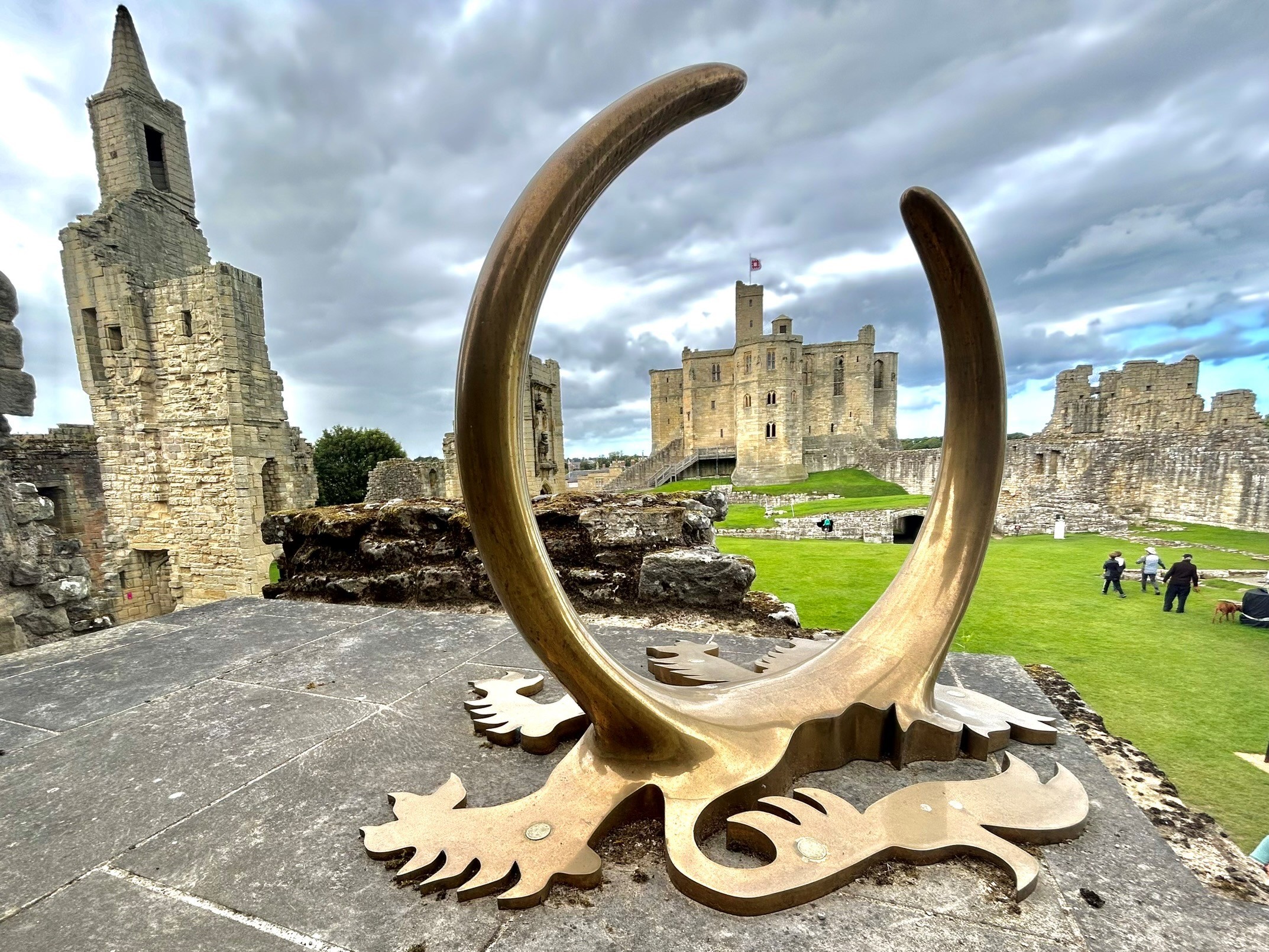
Day 1: Arrival in Warkworth
We set off nice and early on Saturday morning, leaving our home on the edge of the Lake District to make the journey to Berwick Upon Tweed, which is located at the end of the trail and where we had arranged to leave the car for the week. After a pleasant two and a half hour journey along quiet roads through the Scottish Borders, criss-crossing from England to Scotland for the majority of the journey, we made our way across the border into Northumberland. We were greeted with rolling hills and open countryside and a promising glimpse of the sea and coast ahead. We parked up and hopped into a taxi to take us onto Warkworth where we were to spend the night, before heading to the official start of the trail in Cresswell the following morning. Kevin our friendly taxi driver, chatted to us throughout the 50 minute journey and provided us with snippets of information about each place that we passed, which we would eventually be walking through, throughout the course of the week ahead. Kevin dropped us off at Fairfield House, our base for the next two nights – a majestic Victorian house with every home comfort you can imagine.
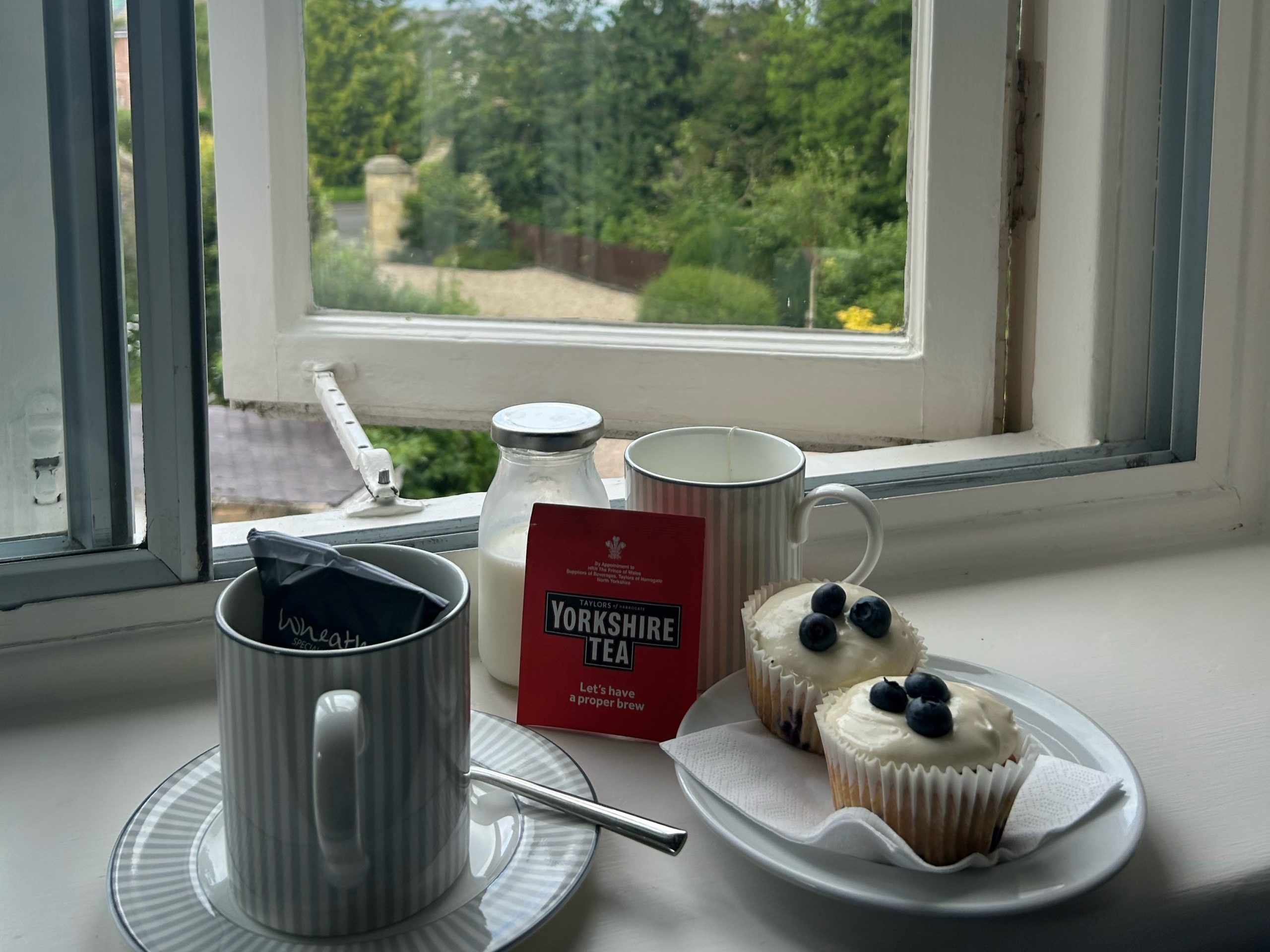
Having arrived nice and early, we headed over the medieval bridge into Warkworth to stretch our legs and warm them up ready for our first 11 mile day the following day, and to explore and enjoy what the small Northumbrian village has to offer. Our first stop was to be Warkworth Castle which stands majestically over the village and dominates the skyline – as you would expect, the castle provides excellent views along the coastline, giving us a taste of what we had to look forward to throughout our walk.
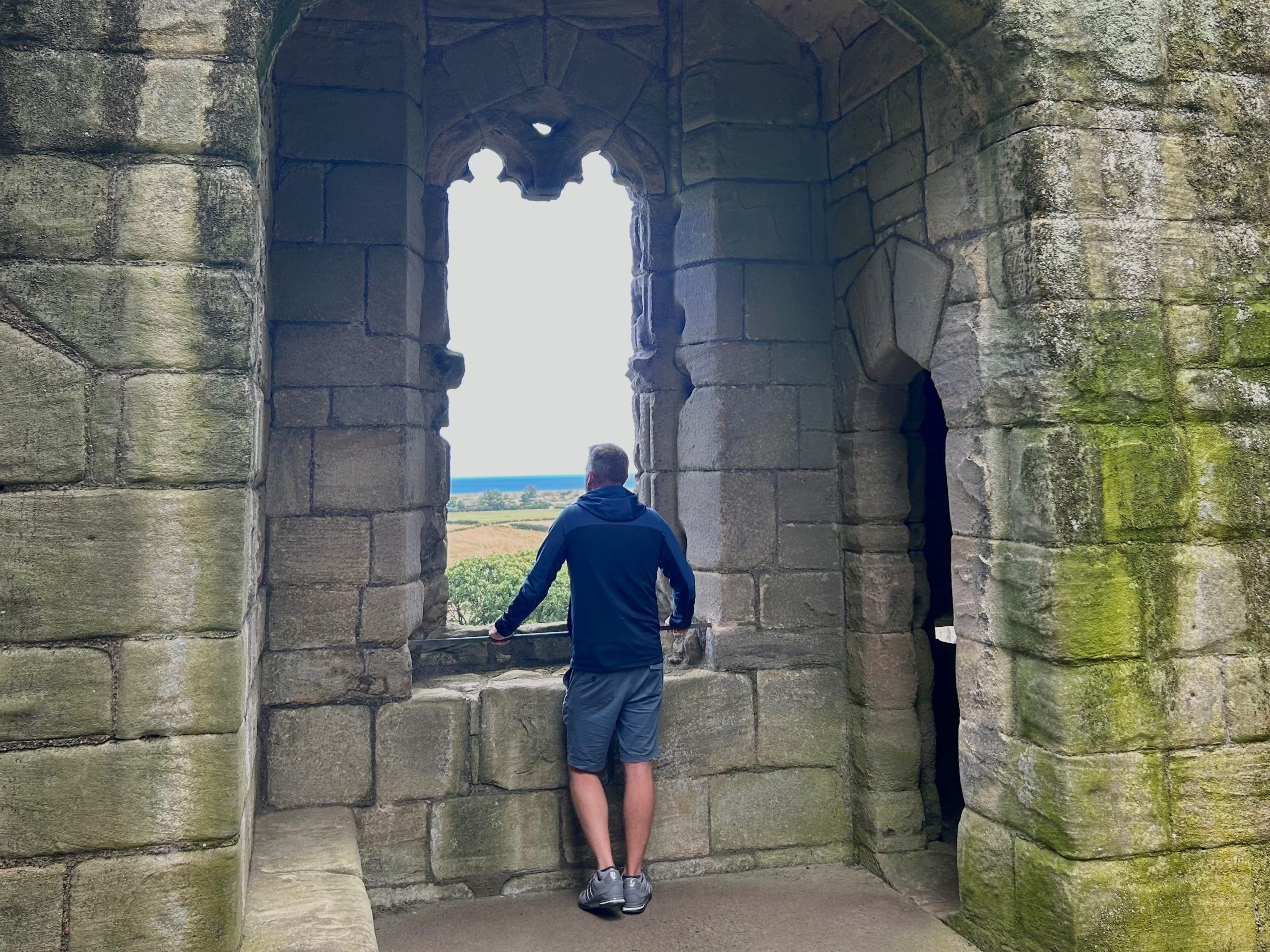
From the castle we meandered along the River Coquet towards the Parish Church of St Lawrence at the opposite end of the village, with its 100ft spire. It was built as a place of worship and to also act as a defence against any attacks. Framed between these two dominating buildings is a lovely village with inns, gift shops and galleries – where we spent the rest of the afternoon relaxing and digesting the information in our guide book, preparing for the 65 mile walk we were to enjoy over the next 6 days.
Day 2: Cresswell to Warkworth
With a hearty home cooked full English breakfast inside us we were ready and raring to go. The official start of the trail is in Cresswell – but with only a café and an ice-cream shop and no overnight accommodation, this means a short taxi ride from Warkworth to the start of the trail.
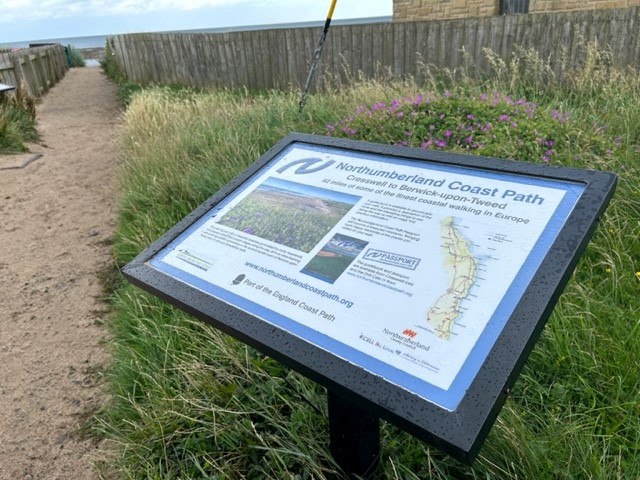
The good old British summer meant we arrived in the rain, however with our waterproofs on and the excitement of what was to come, we headed down onto the beach which was a hive of activity with Sunday morning dog walkers, wind surfers and early morning swimmers braving the chilly North Sea.
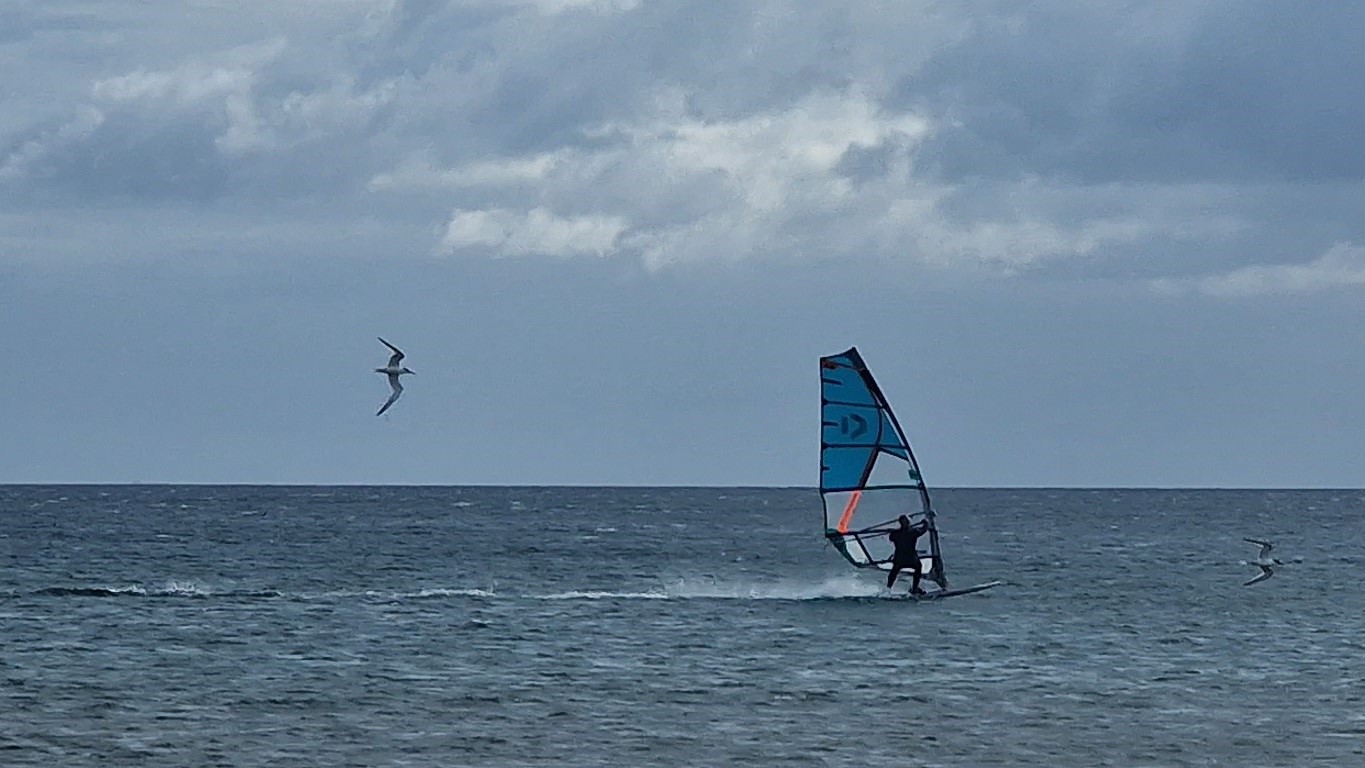
The rain quickly cleared and the sunshine stayed with us for the rest of the day – as we approached Huxley Nature Reserve we detoured up onto the sand dunes and along the edge of the reserve – what more could you ask for – views of the sea and coastline to your right and wildflower meadows and the wetlands swarming with birds to your left.
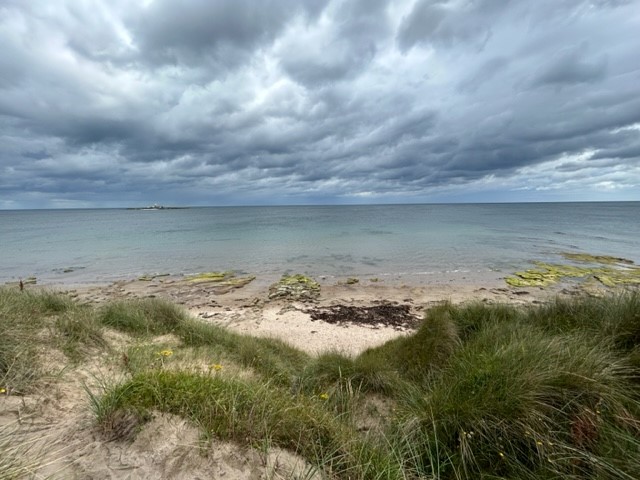
As we neared the traditional fishing village of Amble we headed back onto the beach to admire the view across to Coquet Island and it’s lighthouse. You can’t step foot on the island, however a boat trip from Amble can take you very close – crammed with birdlife for most of the year, and if you’re visiting in Spring you might spot a puffin or two. As you reach Amble you are greeted with a bustling hive of activity – with fishermen unloading there daily catch, lobster pots scattered along the harbour side and a host of unique shops situated in old fashioned beach huts.
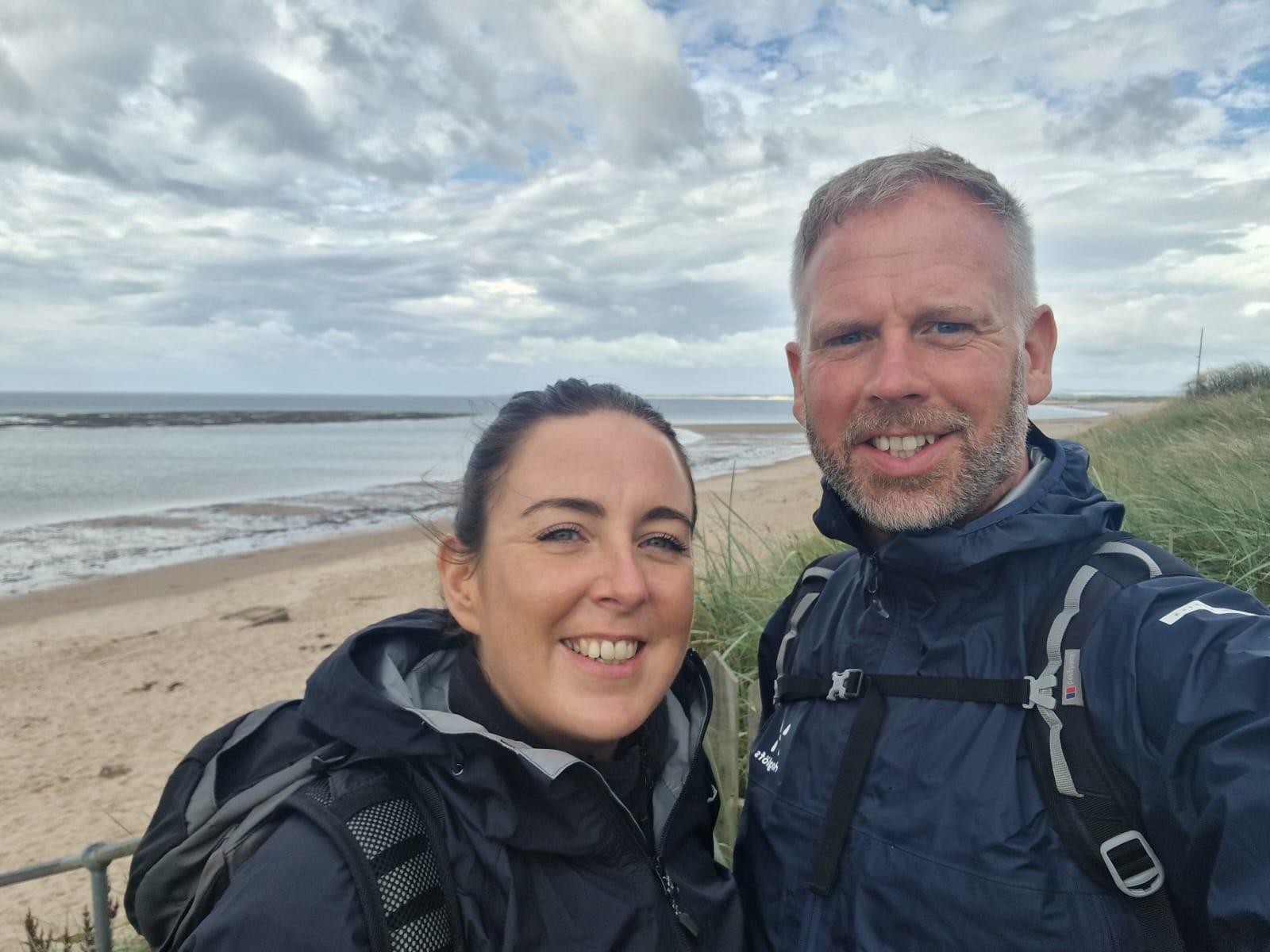
Leaving Amble and it’s harbour behind, the last couple of miles of this day takes you along the River Coquet back into Warkworth, with the magnificent views of Warkworth Castle getting closer. We were spurred on towards the end of day one with views up the coast providing the promise of what was to come the following day.
Day 3: Warkworth to Howick
As well as the coastline being littered with castles, every one of them different and with their own extraordinary history and appearance, and every one of them worth visiting, you’ll also find yourself passing numerous golf courses. They must have some of the best views from golf courses in the UK? All of the golfers we met along the way were friendly and interested in chatting to see where we had come from and how long we had left to go, always encouraging us to stop off at the club house for a cup of tea as walkers are always welcome.
Leaving Warkworth behind and skirting the edge of the golf course and into the sand dunes, we walked along bracken lined paths with only the sound of chirping crickets and the waves crashing onto the yet unseen beach.
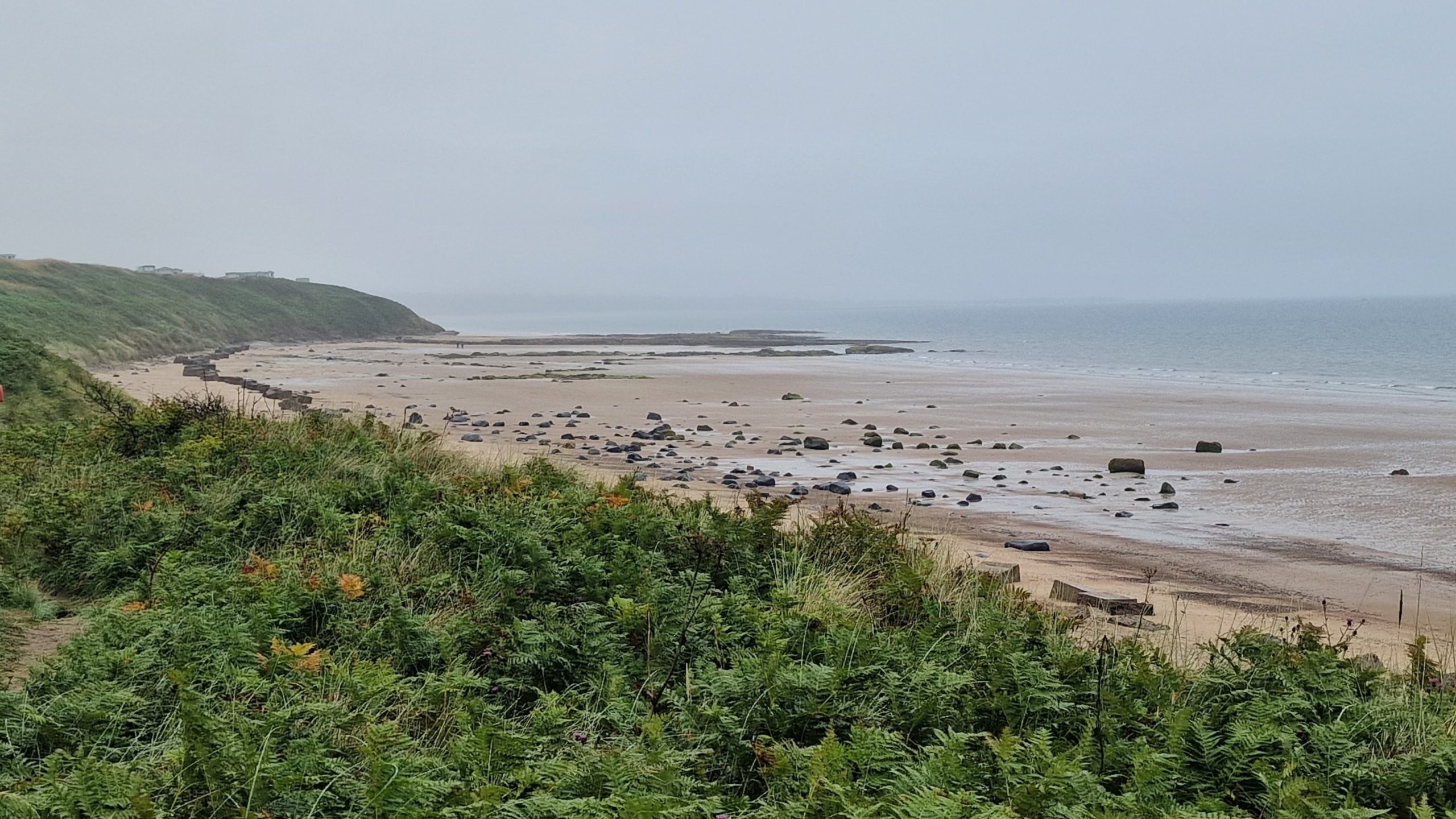
The path soon opened out and we were greeted with a vast sandy beach before us, and views back to Amble and Warkworth Castle behind – on many occasions on this walk we found ourselves stopping and turning back to admire the view back down the coast. On some occasions you can look right back to where you started the day before, which gives you a great sense of achievement.
We headed along the beach past the “dragons teeth” which you will see scattered along the beaches throughout this walk. These concrete blocks were originally placed as a defence system during the second war, but now help with the fight against coastal erosion. We then ventured slightly inland to make our way up the estuary to a safe crossing point where a bridge takes you into Alnmouth. Before heading into the heart of the village we stopped to learn about the history of the town in the tiny Ferryman’s Hut.
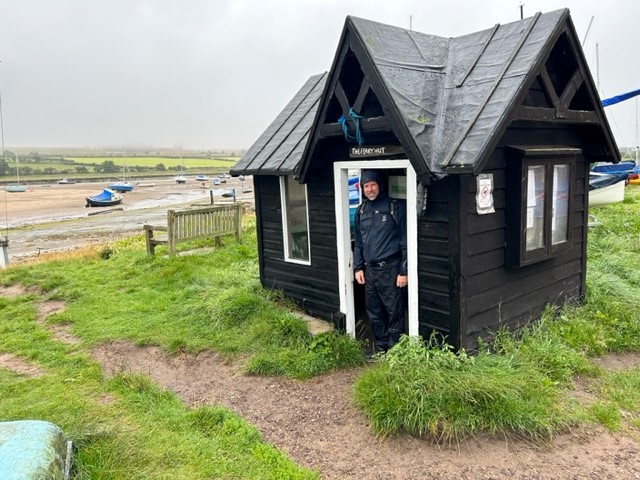
Alnmouth golf course was our half way mark for today, and after spending the morning walking in the drizzle the day brightened and we shed our wet weather gear for the final leg towards Howick. From Alnmouth the path takes you along wide sandy beaches and cliff top paths – the view breathtaking and everchanging. We always kept one eye on the sea, as whale and dolphin pods are regularly spotted of this coastline – we often stopped to debate if it was just a buoy bobbing in the sea, a rock or something more exciting!
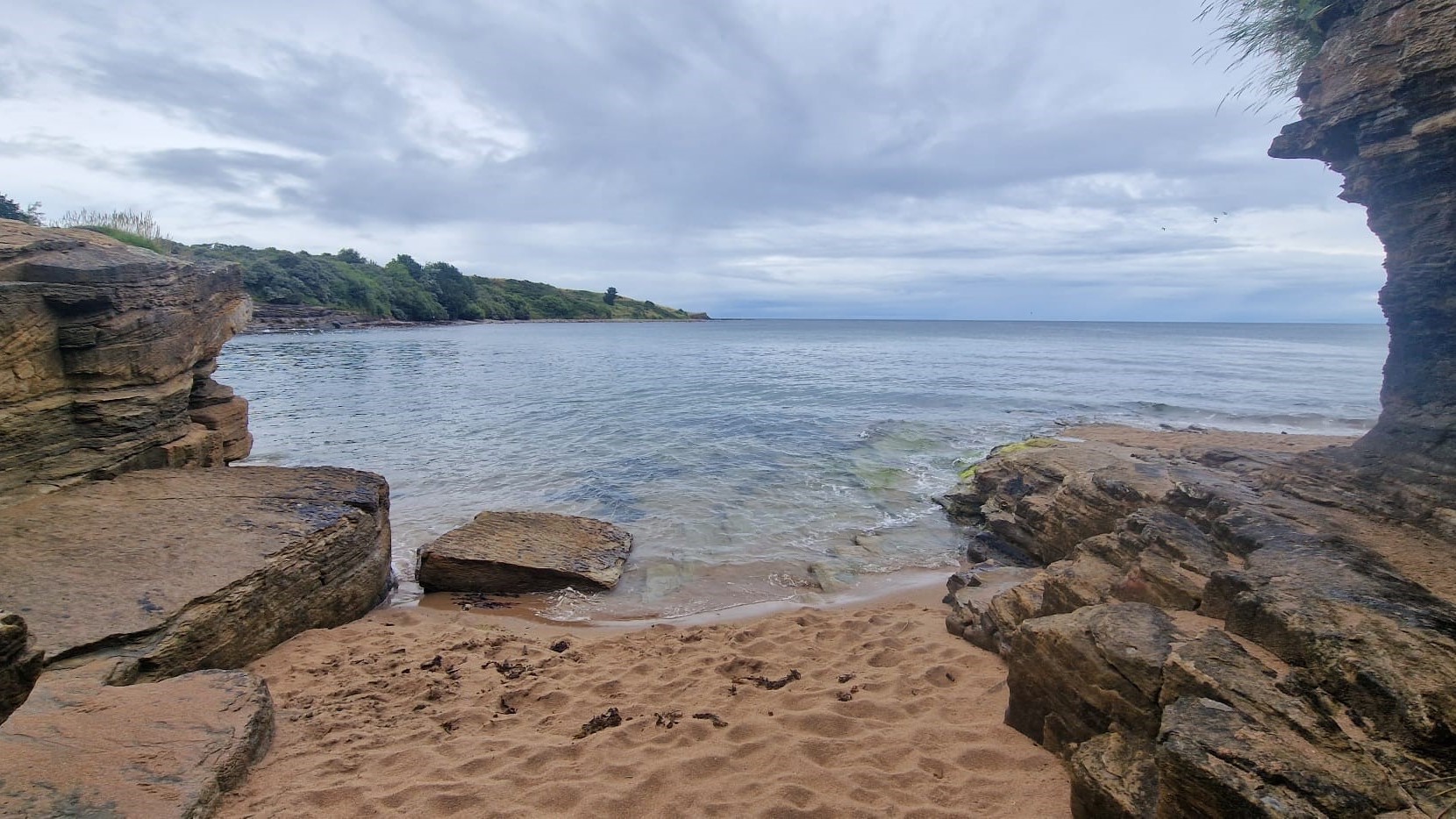
Passing through the tiny fishing village of Boulmer, each cottage with its own boat and lobster pots parked up ready for the fisherman heading out the next morning, and secluded bays, perfect for a dip if you’re a bit braver than us! We arrived at our overnight accommodation, greeted by our host who took our boots from us to dry them by the aga and with a home cooked meal to fill our bellies!
Day 4: Howick to Seahouses
We started the day here with toast and homemade marmalade and a hearty bowls of porridge, listening to tales from other guests who had been lucky enough to spot the dolphin pod yesterday. With dry boots and full bellies we made our way back onto the clifftop path – the path here is also the same one followed by walkers doing St Oswald’s Way. You are soon met with an imposing black cliff scattered with birds, known locally as Cullernose Point it is a black whin sill outcrop and is home to a colony of kittiwakes. And then the village of Craster, which is famous for the Smoked Kippers, which couldn’t be any fresher, caught just off the shore and then smoked in the traditional smoke houses.
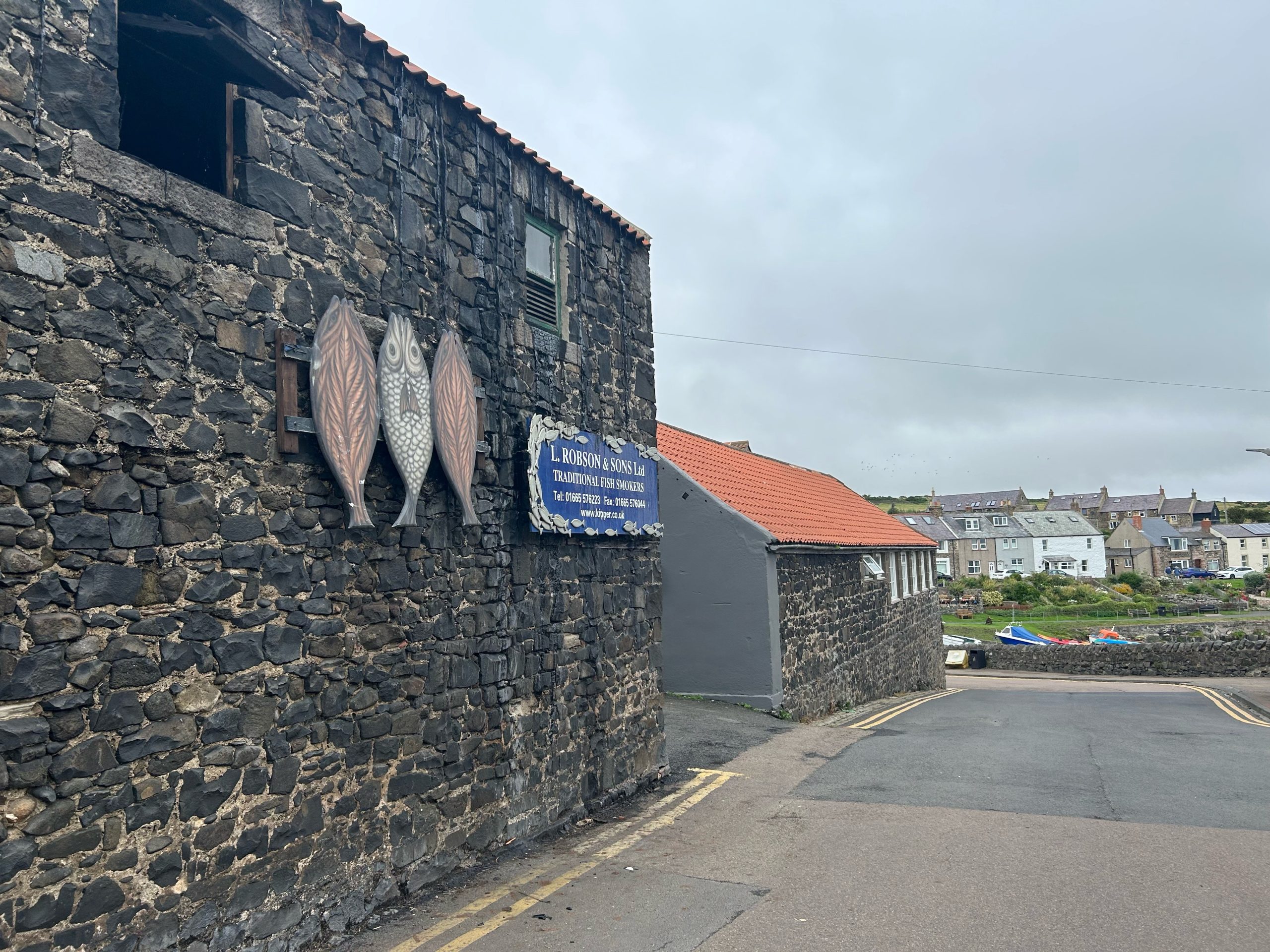
Dunstanburgh Castle provides you with your second castle of the week, walking toward here focused on the impressive ruins and marvelling at how they withstand the elements on such an exposed hillside, we heard someone ahead shout dolphin! We quickly turned and looked out to sea and indeed there was a pod of 6 dolphins making their way along the coastline. After watching them head off into the distance we spent time exploring the ruins of the castle before making our way along the edge of another golf course, towards Beadnell Bay. We found a perfect little lunch spot and rested our feet and chatted about what we’d seen so far and what was yet to come.
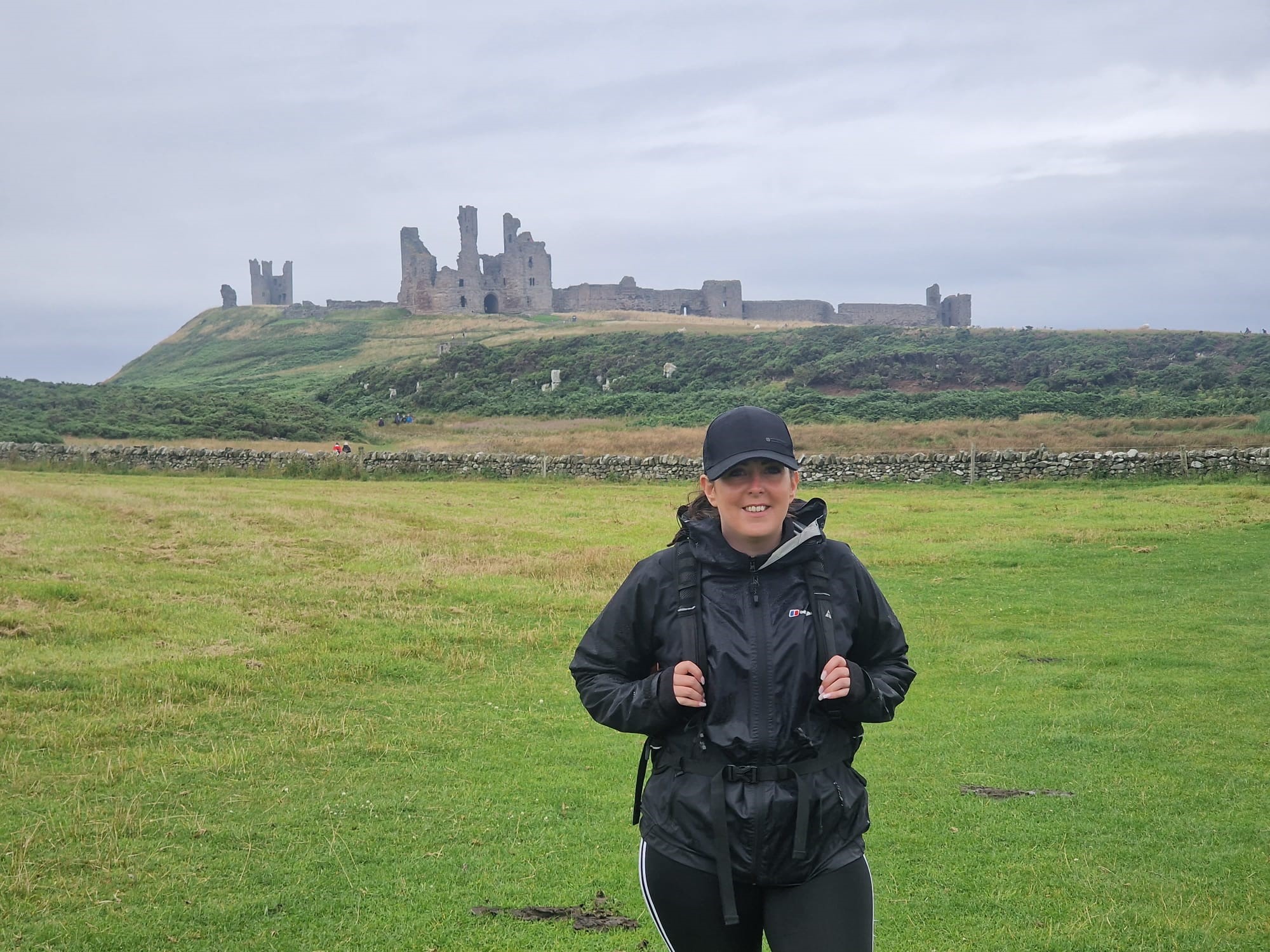
The final part of this day takes you along the beach at Beadnell Bay which is the perfect spot for families to spend the day – the beach was busy with people swimming, paddle boarding and kayaking. Onto the path towards Seahouses, a lively fishing village with spectacular views out to the cluster of Farne Islands situated just of the coast.
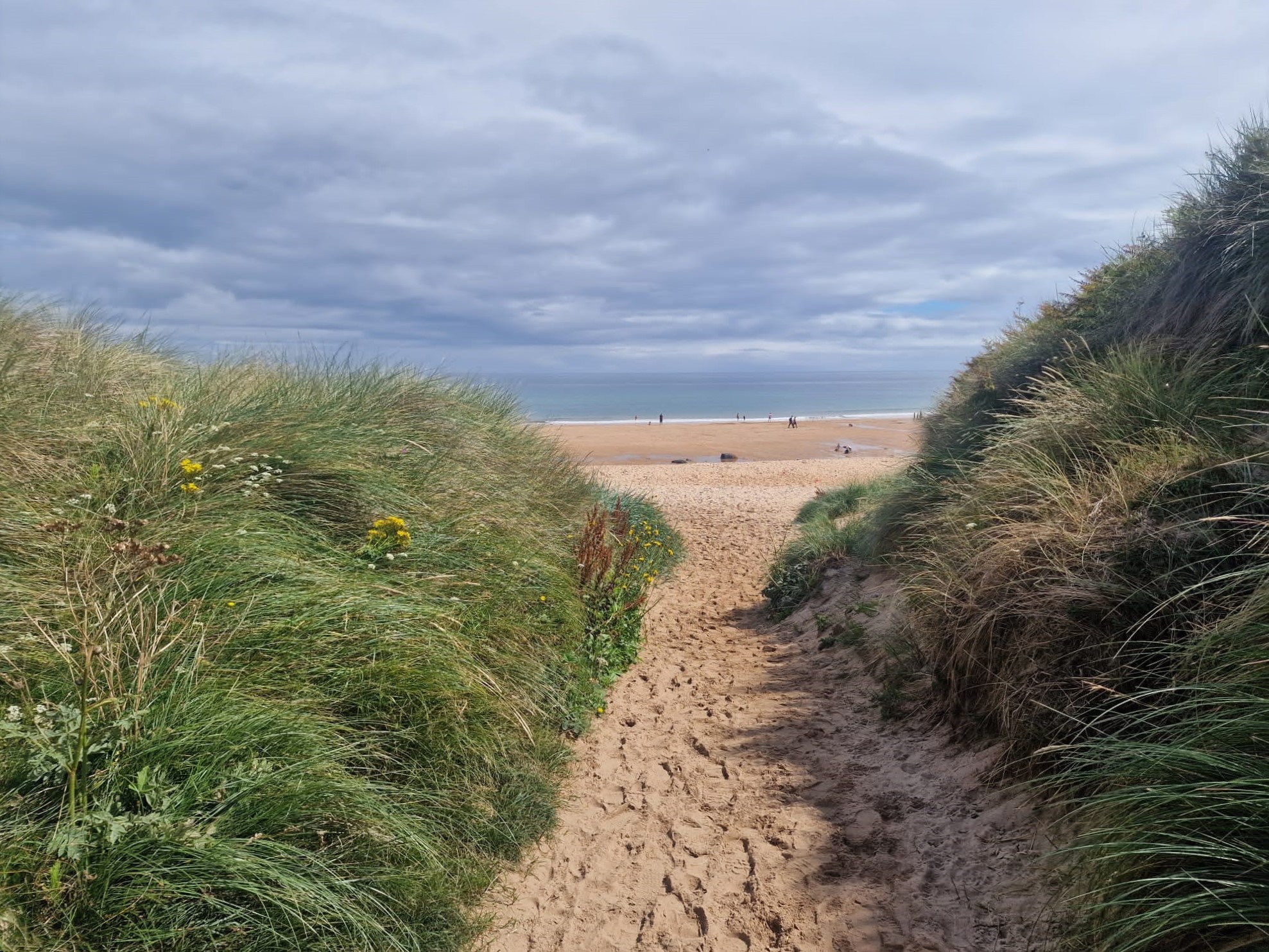
From our overnight base in Seahouses we enjoyed a boat trip out to the islands and this was one of the highlights of our trip. Our boat captain took us around some of the bigger Farne Islands, there are 28 in total, he regaled us with the tails of Grace Darling who in 1838 was a light house keepers daughter based on Longstone Island , when a ship ran aground on a nearby island and she proceeded to launch a rescue mission to help. We spotted an abundance of sea birds including Gullimots, Shags, Arctic Turns and Gannets, along with a large grey seal colony who call the Farne Islands home.
Day 5: Seahouses to Belford
Leaving the bustling seaside village of Seahouses behind, we headed over the dunes onto yet another vast Northumbrian beach, and this one did not disappoint – with views towards Bamburgh Castle, the Farne Islands including Holy Island which we were due to visit on our rest day.
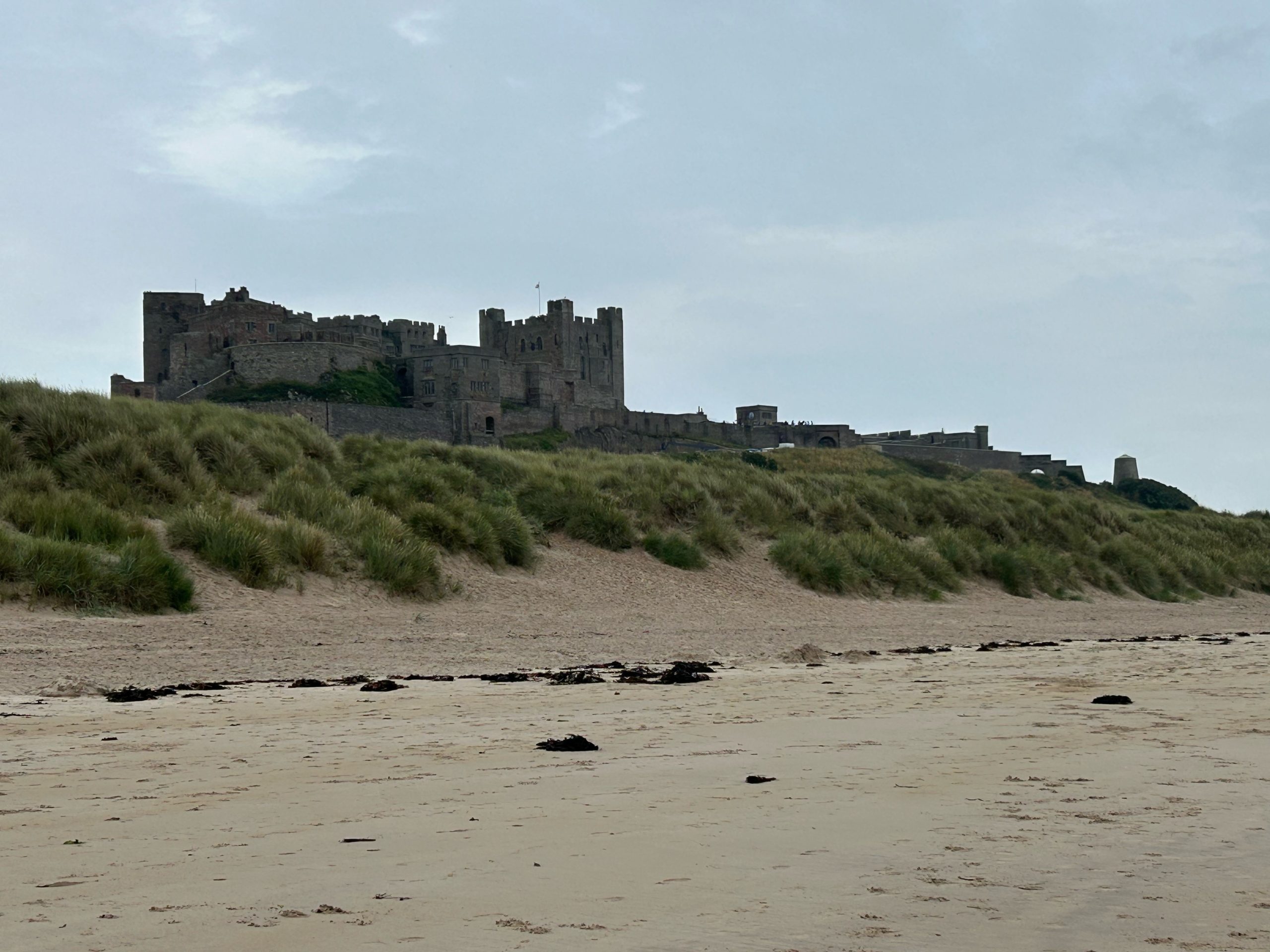
The tide had just gone out, so we spent the next few miles exploring rock pools and marvelling at the different shapes and sizes of seaweed left behind by the wild North Sea. We soon arrived at Bamburgh Castle, which rather than being a ruin like the other castles we’ve explored on this route, is actually lived in. We took a slight detour into the village of Bamburgh to visit the RNLI museum dedicated to Grace Darling and spent some time visiting her memorial at St Aiden’s Church.
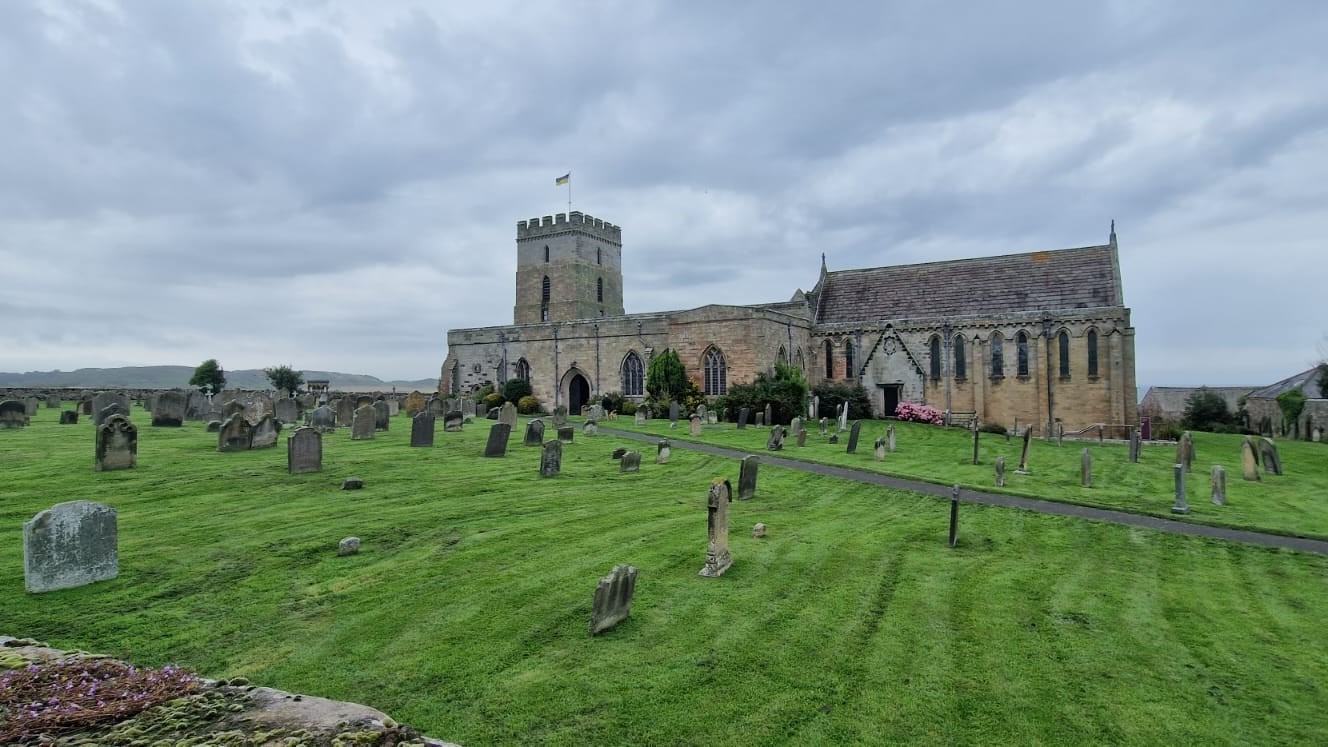
Back on the trail, we passed by another golf course before heading into a woodland section and along quiet country lanes before finding ourself in Belford, our overnight destination.
Day 6: Belford to Lowick
Our penultimate walking day took us inland as the paths along the coast on this section are limited and unsafe, so this is the safest way to head. We passed along the edge of crop fields, farmland and woody outcrops – the scenery along this section is stunning, with views across to the Cheviot hills.
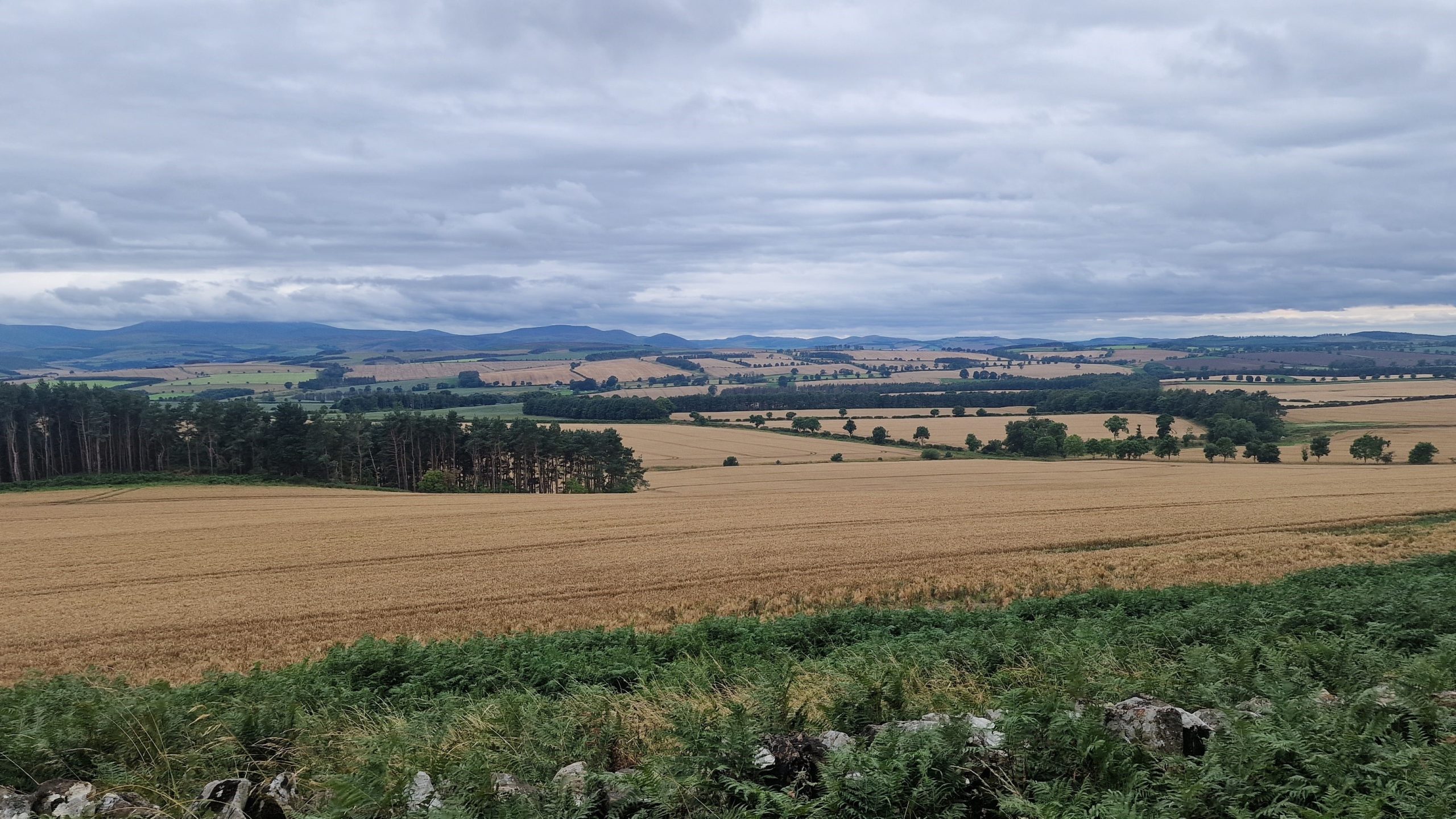
As with some other sections, this path shares it’s route with St Cuthbert’s Way, and as this walking day was relatively short we took a slight detour and visited St Cuthbert’s Cave – legend has it, this is where the monks took shelter whilst transporting St Cuthbert’s body to different locations to protect him from the Danish invaders.
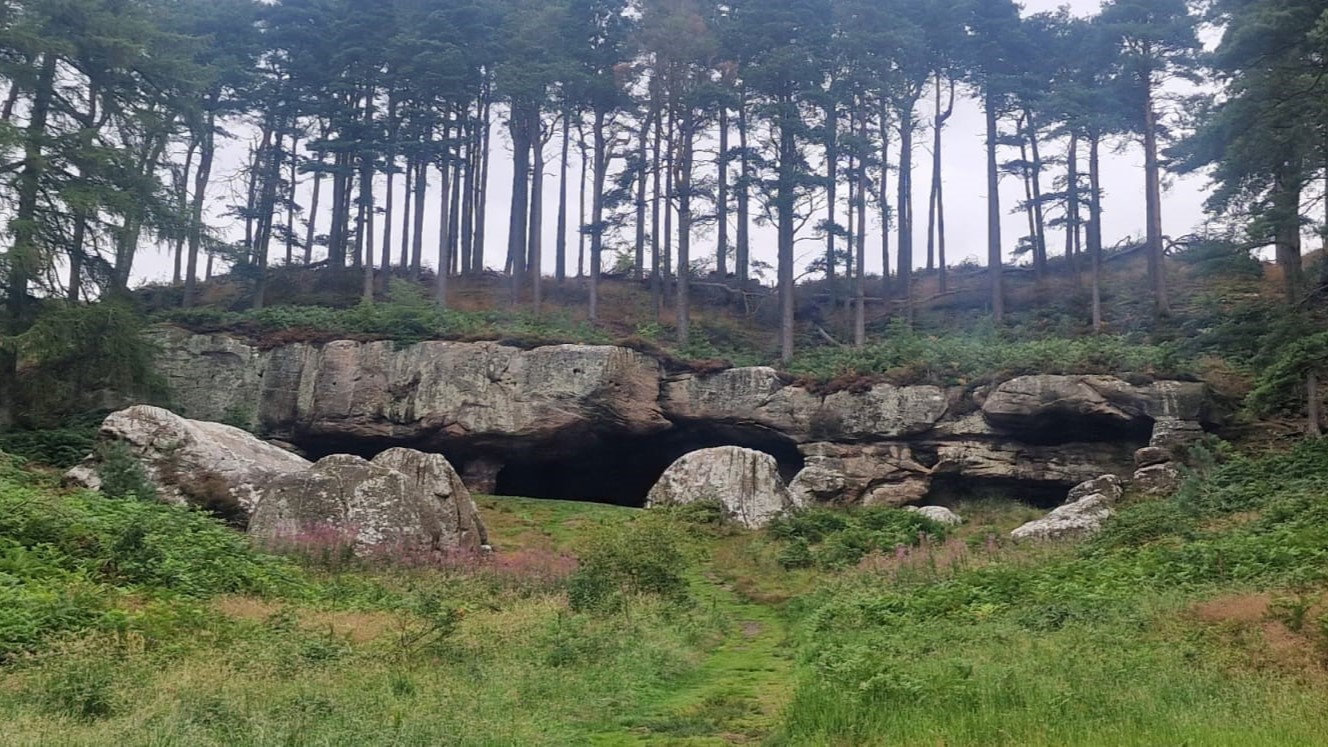
The final section of this walk took us along a forest path, where we spotted an owl and red squirrel enjoying the shelter of the forest – the tea room in the old village hall at Fenwick was a lovely place to stop and enjoy a cup of tea and slice of cake whilst we waited for our short transfer to our overnight stop in Lowick.
Day 7: Fenwick to Berwick Upon Tweed
Our final day – we left with a great sense of achievement and were very much looking forward to the day ahead. Our host took us back to Fenwick where we headed over farmland to the causeway which crosses over to Holy Island. We were lucky enough to spot a couple of Hares at the beginning of the day – I’ve always wanted to see Hares and Dolphins in the wild – so I was delighted that we were luck enough to spot them on our last day!
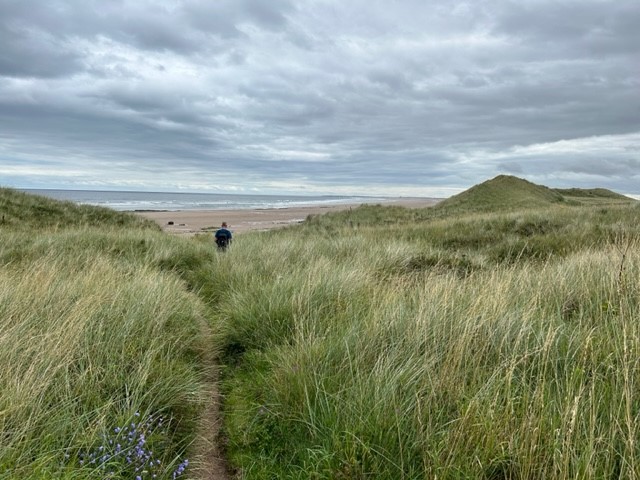
More sand dunes and wide open beaches spurred us along throughout the day and we soon reached the outskirts of Berwick upon Tweed.
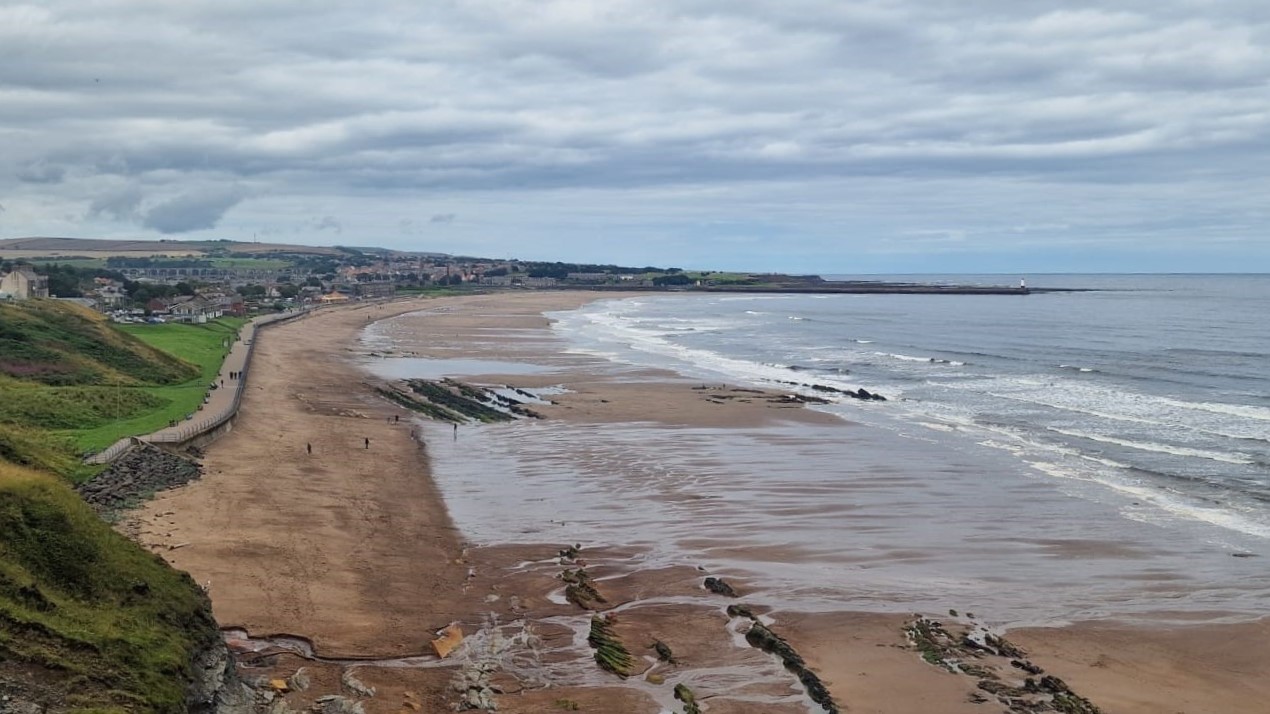
The final leg of the journey took us along Berwick’s promenade which provides excellent views towards the border town – which has changed hands between the English and Scots 13 times throughout history. Lying on the River Tweed it was surrendered to England is 1482 and marks the end of the Northumberland Cost Path trail.
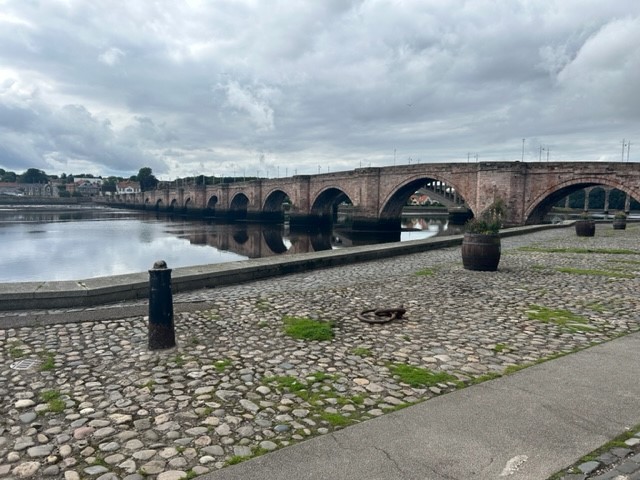
Leaving the promenade behind, we made our way along the River Tweed. The river and harbourside is bustling with activity – with larger fishing boats being unloaded and fisherman casting their nets ready for the tide coming in. Our last section of this amazing walk saw us crossing over the river to the sign post and anchors which mark the end of the trail.
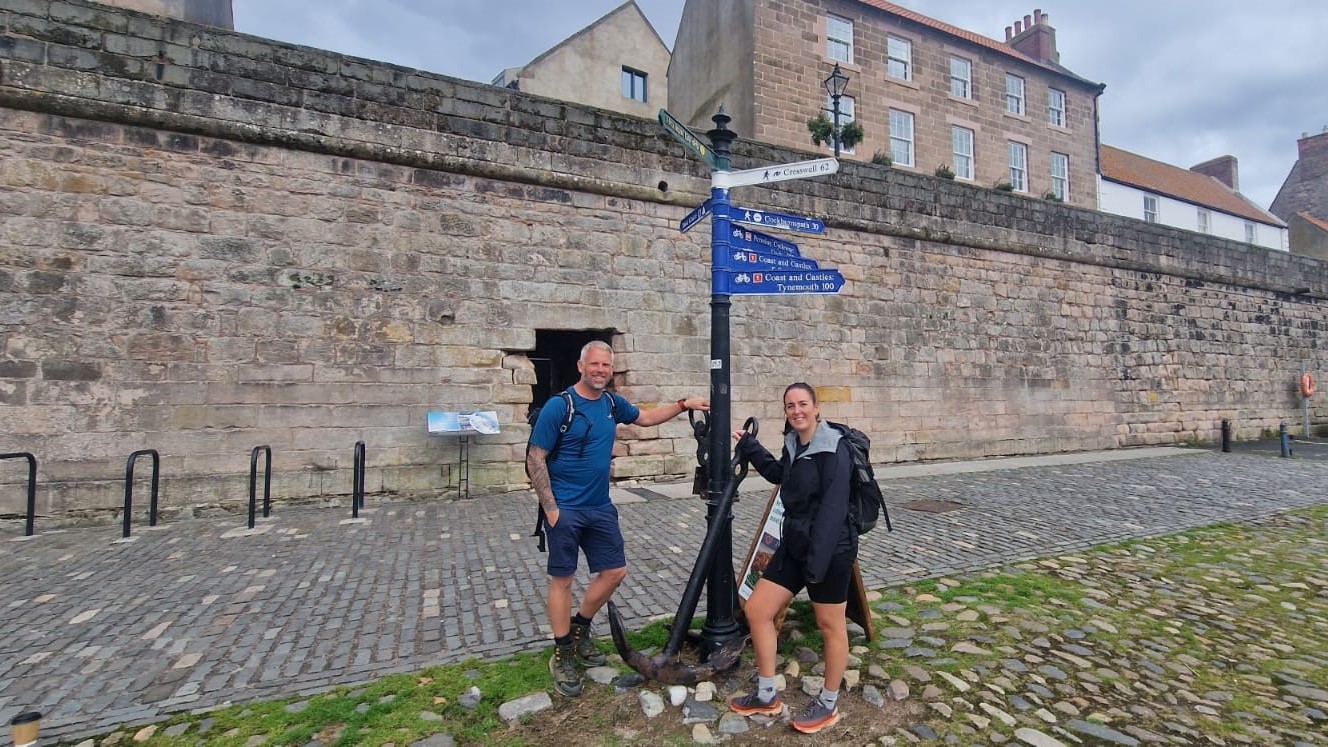
Our first walking holiday turned out to be a great success, and we enjoyed every section of this walk. It has provided us with memories that will last a life time! Northumbria is a very special place and I would recommend anyone to do this walk, whether it is your first walking holiday or 15th holiday, you’ll experience a spectacular coastline, steeped in history and with a story round every corner, you certainly won’t be disappointed.
If Sarah has inspired you to walk the Northumberland Coast Path then please do get in touch, Sarah and our friendly Sales Team will be delighted to help … email us [email protected] or call 017687 72335.